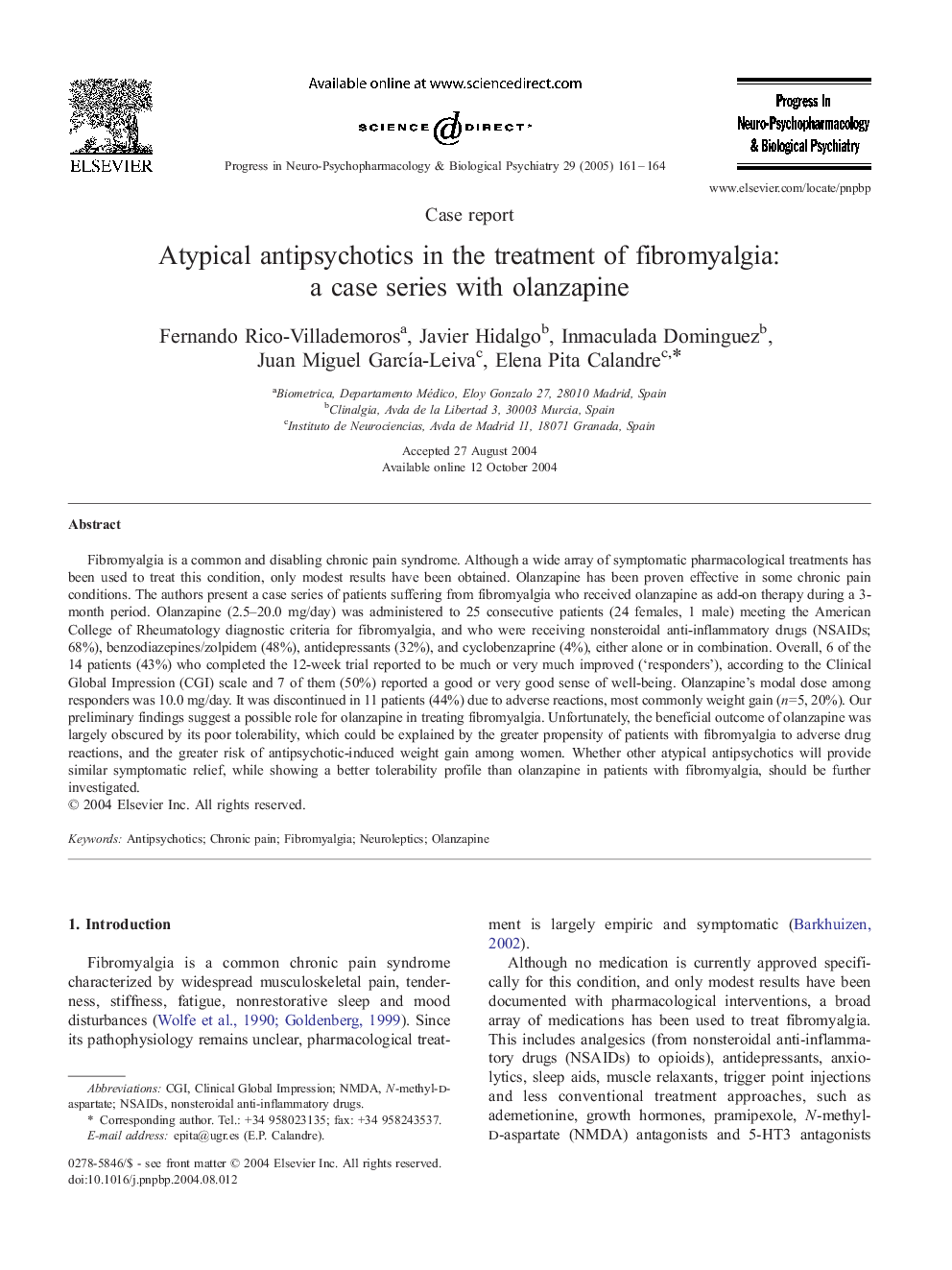| Article ID | Journal | Published Year | Pages | File Type |
|---|---|---|---|---|
| 9016334 | Progress in Neuro-Psychopharmacology and Biological Psychiatry | 2005 | 4 Pages |
Abstract
Fibromyalgia is a common and disabling chronic pain syndrome. Although a wide array of symptomatic pharmacological treatments has been used to treat this condition, only modest results have been obtained. Olanzapine has been proven effective in some chronic pain conditions. The authors present a case series of patients suffering from fibromyalgia who received olanzapine as add-on therapy during a 3-month period. Olanzapine (2.5-20.0 mg/day) was administered to 25 consecutive patients (24 females, 1 male) meeting the American College of Rheumatology diagnostic criteria for fibromyalgia, and who were receiving nonsteroidal anti-inflammatory drugs (NSAIDs; 68%), benzodiazepines/zolpidem (48%), antidepressants (32%), and cyclobenzaprine (4%), either alone or in combination. Overall, 6 of the 14 patients (43%) who completed the 12-week trial reported to be much or very much improved ('responders'), according to the Clinical Global Impression (CGI) scale and 7 of them (50%) reported a good or very good sense of well-being. Olanzapine's modal dose among responders was 10.0 mg/day. It was discontinued in 11 patients (44%) due to adverse reactions, most commonly weight gain (n=5, 20%). Our preliminary findings suggest a possible role for olanzapine in treating fibromyalgia. Unfortunately, the beneficial outcome of olanzapine was largely obscured by its poor tolerability, which could be explained by the greater propensity of patients with fibromyalgia to adverse drug reactions, and the greater risk of antipsychotic-induced weight gain among women. Whether other atypical antipsychotics will provide similar symptomatic relief, while showing a better tolerability profile than olanzapine in patients with fibromyalgia, should be further investigated.
Keywords
Related Topics
Life Sciences
Neuroscience
Biological Psychiatry
Authors
Fernando Rico-Villademoros, Javier Hidalgo, Inmaculada Dominguez, Juan Miguel GarcÃa-Leiva, Elena Pita Calandre,
